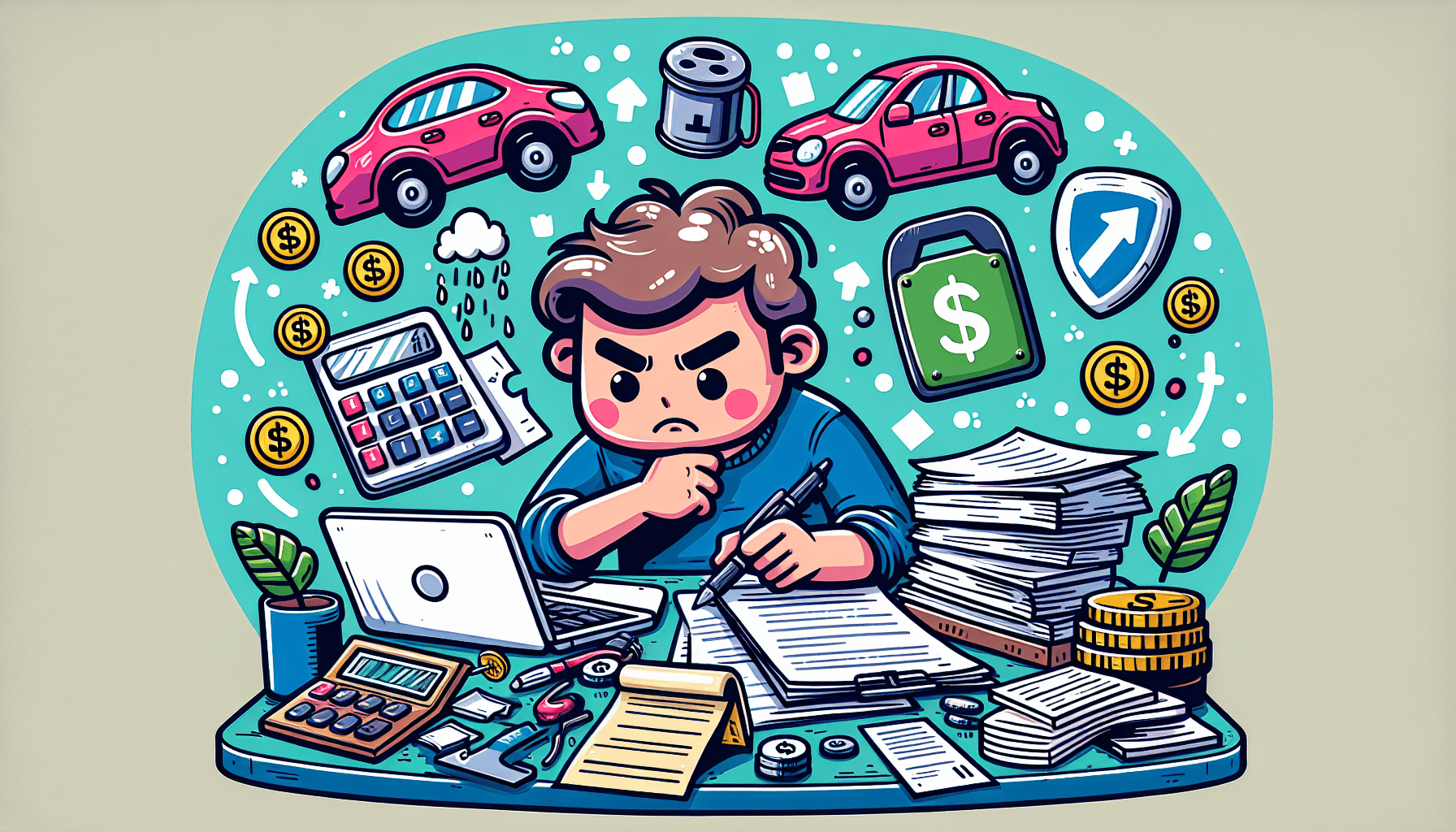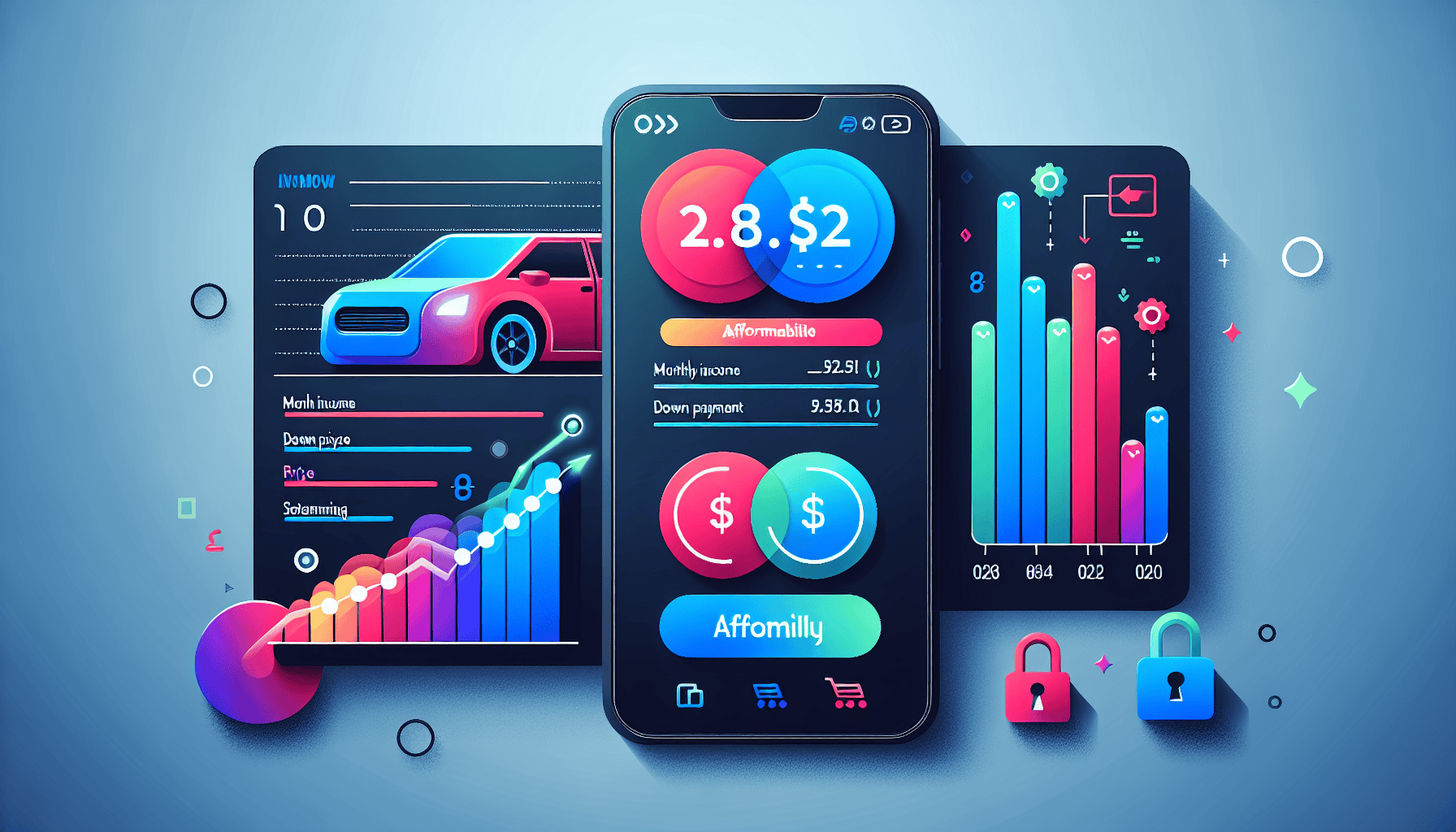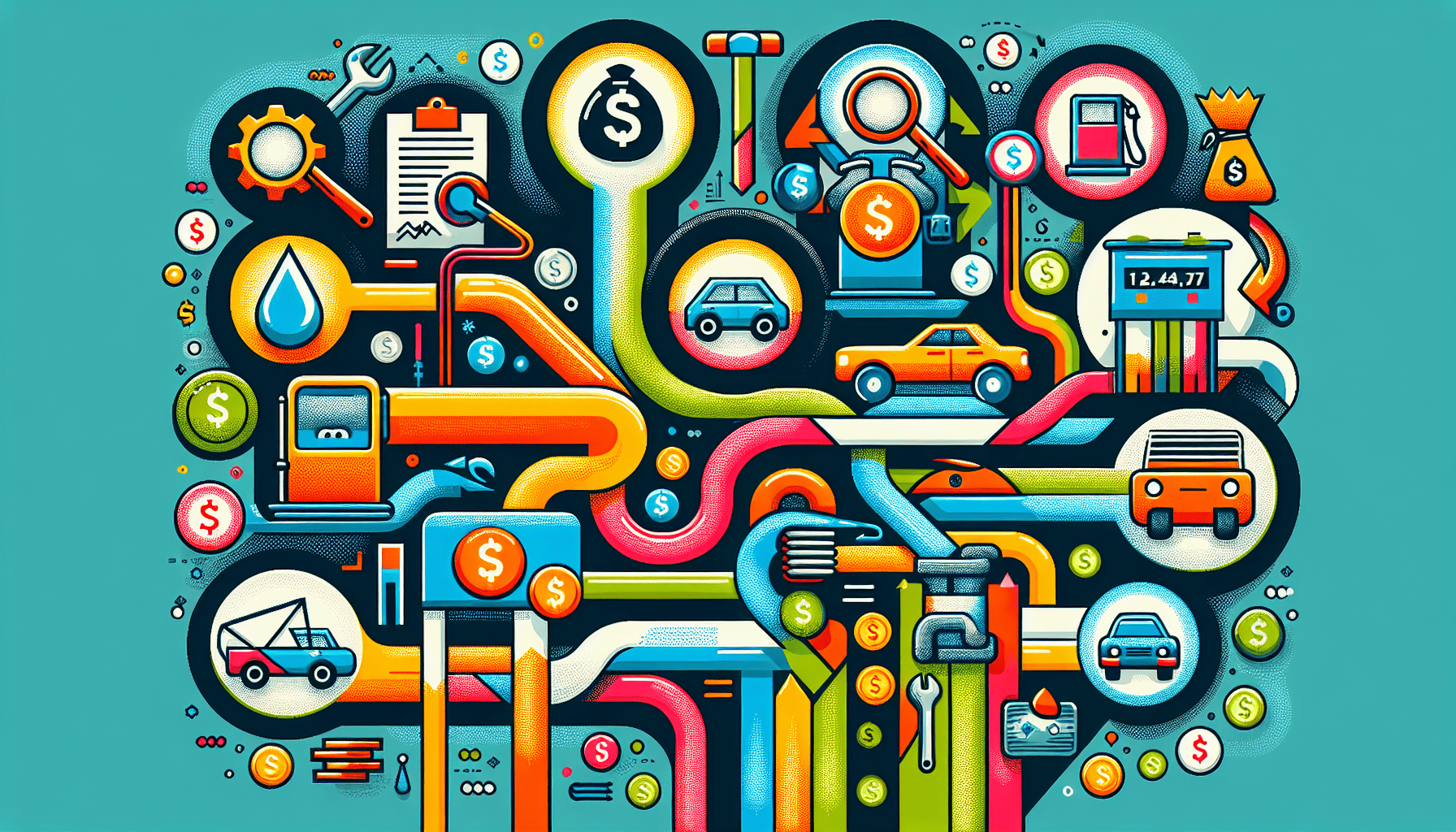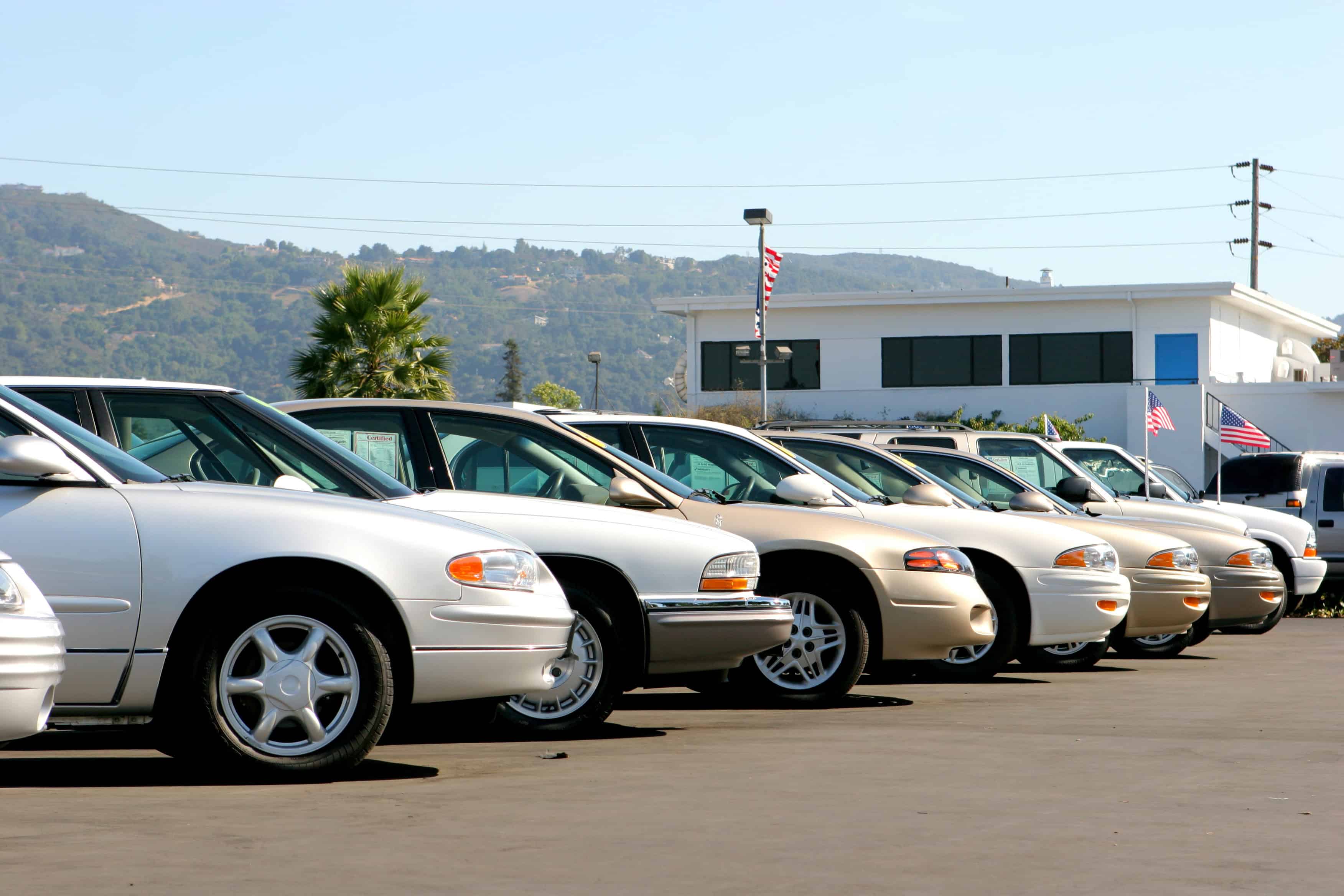How to Know How Much Car You Can Afford: A Simple Guide
Wondering how to know how much car you can afford? Begin by looking at your monthly income and expenses to set a realistic car budget. Auto Approval explains everything here. It covers car payments, extra costs, and tools like affordability calculators.
Key Takeaways
- Set a car budget. Check your monthly take-home pay and essential expenses. Aim for car payments to be no more than 10-15% of your net income.
- Use a car affordability calculator to check your borrowing capacity. Enter precise financial information to get reliable loan estimates and ideal purchase prices.
- To make smart car-buying decisions, consider the total cost of ownership. This includes insurance, fuel, maintenance, and hidden fees. Also, understand the auto loan terms.
Determining Your Car Budget

Know your car budget. It’s the first step to making a smart purchase. Many focus only on the monthly car payment. It’s important to see the bigger picture.
Begin by evaluating your monthly take-home pay and subtracting essential expenses. It helps identify what you can afford for car payments and costs.
Assessing Monthly Take-Home Pay
Start by listing your net income, the amount you take home after taxes and deductions. Financial experts say car payments should not exceed 10% of your take-home pay. With a $60,000 salary, your monthly take-home pay would be about $3,750. This can help you determine your car loan payment.
Next, subtract recurring expenses like rent, utilities, and groceries from your net income. This helps set a fair limit for car payments. It avoids financial strain and protects your overall financial health.
Calculating Monthly Car Payment
Calculate an affordable car payment. Know your monthly take-home pay. Car payments should not surpass one-seventh of your monthly earnings. For example, with a gross monthly income of $4,167, you should aim for a car payment of up to $416. If your take-home pay is $3,000, a reasonable car payment would be around $300.
Remember, exceeding these guidelines can lead to financial difficulties. If the car payment is too high, adjust your expectations. Or, find ways to increase your income, like getting a second job.
Factoring in Additional Costs
Beyond the monthly car payment, consider other associated costs of car ownership. Fuel and insurance costs, for instance, should account for around 7% of your take-home pay. Extra costs, like maintenance, repairs, sales tax, and registration, can hurt your car budget.
When buying a vehicle, include sales tax and registration fees. They add about 10% to the advertised price. This approach reveals hidden costs. It gives you a true view of the total cost of ownership.
A car affordability calculator can help you. It can account for these extra costs. It gives a better idea of what car you can afford. Considering these factors helps you make an informed choice when buying a vehicle.
Using a Car Affordability Calculator

A car affordability calculator helps you find car loan payments that fit your budget. It considers your credit score, interest rate, and loan duration. You can adjust these to see how they affect your borrowing capacity.
This calculator helps you find a target price for your car. It also estimates the maximum car loan you can afford. The estimates may not be accurate due to varying data. Still, they are a helpful resource for budgeting.
Inputting Financial Information
For best results from a car affordability calculator, input detailed financial info. This includes your monthly income, expenses, down payment, loan duration, and interest rate. Also, consider your trade-in value and credit tier. They can affect your estimated monthly payments.
Accurately fill out each field to get the best possible estimate. Key variables include the down payment, interest rate, loan term, and if the vehicle is new or used. A thorough input process shows your true borrowing capacity. It helps set a target purchase price.
Interpreting Results
After you enter your financial info, the calculator will assess your borrowing capacity. It suggests a loan amount that fits your budget. The price range shows the vehicle you can afford. It guides you in setting a target purchase price.
Check the interest rate from your dealer or lender. It affects your total cost. Also, trim level, options, sales tax, and registration fees can affect the final price. Make budget revisions based on new information.
Understanding Auto Loan Terms
Understanding auto loan terms is key for making informed decisions about vehicle financing. Your loan’s cost depends on your credit score, interest rate, and loan duration. Knowing these terms helps you buy a car and get a good loan. Some terms to recognize:
- Annual Percentage Rate (APR): This is the most crucial term to understand. It is the total cost of borrowing. It includes the interest rate and any fees. It is a yearly percentage. A lower APR means lower borrowing costs.
- Down Payment: This is the upfront amount you pay towards the vehicle’s purchase price. A larger down payment reduces the loan amount. It may lower monthly payments and interest.
- Loan Term: This refers to the length of time you have to repay the loan. Longer loan terms result in lower monthly payments but higher overall interest costs. Shorter loan terms mean higher monthly payments but less total interest paid.
- Principal: This is the amount you borrow to buy the vehicle, excluding any interest or fees.
- Prepayment Penalty: Some lenders charge a fee if you pay off the loan early. Check if your loan agreement has a prepayment penalty. Do this before making any large payments towards the principal.
Additional Florida-specific Considerations
- GAP Insurance: Florida’s hurricanes and floods mean you should get GAP insurance. It covers the gap between your auto loan and your car’s value if it’s totaled or stolen.
- Extended Warranties: Florida’s hot and humid climate can be tough on vehicles. Research extended warranties. They can protect against high repair costs, especially for used cars.
Interest Rates
In Florida, auto loan rates greatly affect car affordability. High interest rates raise monthly payments. They strain budgets, especially with the rising cost of living in the state. A small difference in interest rates can, over time, add thousands to the interest paid. This can hinder long-term financial goals like saving for a home or retirement.
Yet, Florida’s competitive automotive market often presents opportunities for borrowers. Credit scores have a significant impact on interest rates, making a high score essential. The vibrant market fosters competition among lenders. Borrowers can compare offers and negotiate better terms. Also, Florida’s large used car market has unique interest rate dynamics. The vehicle’s age and the economy influence them. Knowing these factors helps Floridians buy cars and make smart financial choices.
Loan Duration
Your car loan’s length can greatly affect your payments and total interest, whether you’re buying new or used.
- Longer Loans, Lower Payments: Opting for a longer loan term will reduce your monthly payments, making them more manageable in the short term. This can be particularly appealing in Florida, where living expenses can be high.
- The Hidden Cost of Time: Longer loans mean you’ll pay interest longer, raising the total cost. In a state like Florida, where the used car market is robust, the temptation to stretch out a loan term to afford a newer model can be strong. Yet, it’s important to consider the long-term financial implications.
- Shorter Loans, Higher Payments: A shorter loan term means higher monthly payments. But, you’ll pay much less interest overall. This can be a smart financial move if you can comfortably handle the larger payments, saving you money in the long run.
Shorter loan terms lead to higher monthly payments but less overall interest paid. Balancing the loan duration with your financial capacity is key to managing your car loan effectively.
Down Payment Amount
A down payment can significantly reduce your monthly payments by lowering the total amount borrowed. The recommended down payment for a car purchase is between 10-20%. For example, John made a down payment of over 10%, amounting to $2,660, translating to an 11% down payment on a used vehicle.
Without a down payment, you may end up upside down on the loan, owing more than the car’s value. Therefore, making a suitable down payment is crucial for financial stability and reducing loan amounts.
Evaluating Total Car Ownership Costs

Understanding the total cost of ownership is key for making informed car purchase decisions. Beyond the purchase price, consider ongoing costs such as fuel, insurance, maintenance, and repairs.
Fuel and Insurance Costs
In Florida, sales tax and registration fees are extra costs of car ownership. Along with gas and insurance, they can strain your budget. Sales tax, which is added to the car loan, increases the total amount owed and can significantly impact your monthly payments. In Florida, the state sales tax rate is 6%, but don’t forget about the potential for additional discretionary sales surtaxes levied by individual counties, which can further increase the overall cost. It’s crucial to be aware of these potential surtaxes, as they can vary significantly from one county to another.
Florida’s registration fees can be high. They significantly increase ownership costs. In 2023, the national average for licensing, registration, and taxes was about $762. Florida’s costs can vary based on several factors. The type of vehicle you purchase, its weight, and even the county where you register it can all influence the final registration fee. It’s essential to research these fees specific to your situation and the vehicle you’re considering when budgeting for a car purchase.
Furthermore, Florida drivers face additional costs in the form of gas and insurance. Gas prices in Florida can fluctuate, but they tend to be slightly higher than the national average. The average gas price in Florida currently is $3.296 for regular, $3.729 for mid-grade, $4.051 for premium, and $3.621 for diesel. It’s crucial to factor in these potential fuel costs when considering the overall affordability of a vehicle. Similarly, car insurance rates in Florida are generally higher than in many other states due to factors like a high number of uninsured motorists and frequent weather-related claims.
Failing to account for these Florida-specific costs, including sales tax, registration fees, gas, and insurance, can lead to unpleasant surprises and financial strain down the road. By including these estimated expenses in your payment calculations, you’ll see affordability better. It will ensure you’re ready for car ownership in the Sunshine State. Remember, proactive budgeting for these additional costs upfront can save you from unexpected financial burdens and contribute to a smoother and more enjoyable car ownership experience.
Maintenance and Repairs
Budgeting for maintenance and repairs is crucial for managing overall ownership costs. A new car’s typical monthly maintenance and repair cost is $123. It covers essential services like oil changes and tire rotations. New vehicles often have warranties. They cover maintenance and repair costs, easing early financial burdens.
Sales Tax and Registration Fees
Sales tax and registration fees are additional costs that need to be factored into the total cost of car ownership. Sales tax is added to the car loan, increasing the total amount owed. On average, car owners paid around $762 in 2023 for licensing, registration, and taxes associated with vehicle ownership.
Including these costs in your payment calculation shows true affordability. Understanding these costs helps avoid surprises. It ensures you’re prepared for car ownership.
Choosing Between New and Used Cars

Deciding between a new and used car involves weighing financial benefits and drawbacks. Newer cars typically have lower maintenance costs due to warranties and fewer issues, while older vehicles may require more repairs as parts wear out.
Financial Benefits of Used Cars
Used cars generally have a lower sticker price than new cars, making them more affordable. Many used vehicles retain strong resale values, allowing owners to sell them for nearly the same price they initially paid. Purchasing a lightly used car and keeping it for many years can lead to significant cost savings compared to buying a new one.
Depreciation is the main factor contributing to the lower cost of used cars. New cars experience rapid depreciation in the first few years of ownership, losing a significant portion of their value. Used cars have already undergone this initial depreciation, meaning their value decreases at a much slower rate. This slower depreciation translates into lower insurance premiums, another significant cost advantage of used cars.
Additionally, used cars are often eligible for lower interest rates on auto loans compared to new cars. This can further reduce the overall cost of ownership. By opting for a used car, you can save money on the purchase price, insurance premiums, and potentially even interest rates. These savings can be used to pay off the loan faster, invest in other financial goals, or simply enjoy more financial freedom.
Advantages of New Cars
New cars come with warranties that provide peace of mind regarding repairs and maintenance. However, they also depreciate rapidly, especially within the first few years of ownership. On the upside, new cars often feature the latest technology and safety features, enhancing the driving experience.
These warranties can cover a wide range of components and systems, protecting owners from unexpected repair costs. This is valuable for those who prioritize reliability. They want to avoid the hassle of potential breakdowns. In addition to warranties, new cars often come with complimentary maintenance packages for the first few years, further reducing ownership costs.
Moreover, new cars are equipped with cutting-edge technology and safety features that may not be available in older models. These features can include advanced driver-assistance systems and the latest infotainment systems. They should also have better fuel efficiency. For tech-savvy individuals and those who value safety, these features can significantly enhance the overall driving experience.
Exploring Financing Options
Exploring different financing options is crucial for securing the best deal on your car purchase. A larger down payment can lead to lower monthly payments and better loan terms. New cars typically offer better financing options and interest rates, resulting in overall savings.
Comparing Auto Loans
When comparing auto loans, consider factors like interest rates, term options, and loan limits to make an informed decision. An established relationship with lenders might help you qualify for lower interest rates.
Comparing loans from multiple lenders ensures you secure the best financial outcome for your car purchase. Thoroughly assessing and comparing offers can lead to better rates and terms, ultimately saving you money in the long run.
Is Leasing a Good Option?
Leasing is an alternative to buying that can provide a more manageable monthly payment strategy. Leasing payments are typically lower than financing payments, as you’re mainly covering the vehicle’s depreciation. This option is ideal for those who like driving a new car every few years.
However, at the end of the lease, you must return the car unless the agreement permits a purchase. Exceeding the allowed mileage can also result in additional costs, making it crucial to understand the terms and conditions of your lease agreement.
Trade-In Value
Trading in a vehicle at the dealership can help reduce your total car payment. Trading in your existing vehicle reduces the loan amount needed for your new car. This, in turn, lowers the overall cost. One major benefit is that it may lead to a decrease in sales tax on your purchase.
Consider factors like trade-in value when assessing your overall car costs to optimize your budget. A down payment or trade-in can allow you to buy a higher-priced car or borrow less money overall, making the vehicle purchase more affordable.
Making Smart Car Purchase Decisions
Making smart car purchase decisions involves understanding your budget and financing options. The results from the car affordability calculator can clarify your borrowing limits and help in selecting a realistic target purchase price. Understanding your credit report is crucial as it influences loan approval and interest rates.
Comprehending auto loan terms is essential for making informed decisions about vehicle financing. It’s advisable to get an all-inclusive ‘out-the-door’ price for the car before discussing financing. Knowing the trade-in value of your existing vehicle can also help you negotiate a better deal.
Setting a Target Purchase Price
A car affordability calculator can help estimate the maximum loan amount and the target purchase price of a vehicle you can afford. After inputting your financial details into the calculator, it provides results that show the maximum loan and car price, guiding you to set a target purchase price.
Consider the total costs of car ownership, which include not only the loan payments but also insurance, maintenance, and registration fees. Making a suitable down payment can significantly reduce the amount you need to finance, influencing your overall purchase price.
Negotiating Effectively
Researching the car’s value using resources like Kelley Blue Book can strengthen your negotiation position. Starting negotiations with a focus on the car’s final price rather than monthly payments can lead to better outcomes. It’s advisable to negotiate the car price separately from financing to prevent confusion and potential financial loss.
Establishing a target price based on average transaction prices helps in negotiating effectively at dealerships. By being well-prepared and informed, you can secure the best deal possible for your new car.
Improving Your Credit Score
A low credit score can lead to a higher interest rate, resulting in higher monthly payments. Improving your credit score can help you qualify for a lower interest rate, reducing car ownership costs.
Regularly checking your credit report can help identify areas for improvement, leading to more favorable loan offers. By improving your credit score, you can seek more favorable loan conditions and reduce overall costs.
Summary
In summary, determining how much car you can afford involves assessing your monthly take-home pay, calculating an affordable car payment, and accounting for additional costs like fuel and insurance. Using a car affordability calculator, understanding auto loan terms, and evaluating total car ownership costs are crucial steps in the process.
Making informed decisions, whether choosing between new and used cars or exploring financing options, ensures that your car purchase is both enjoyable and financially sound. By following these guidelines, you can confidently navigate the car-buying journey and drive away with a vehicle that fits your budget and lifestyle.
FAQ
How much of my monthly income should go towards car payments?
You should allocate no more than 10-15% of your monthly take-home pay for car payments to maintain financial stability. This guideline helps ensure your overall budget remains balanced.
What additional costs should I consider when budgeting for a car?
When budgeting for a car, you should account for insurance, fuel, maintenance, unexpected repairs, sales tax, and registration fees. These additional costs are essential for a comprehensive financial plan.
How does a car affordability calculator help?
A car affordability calculator assists you in identifying car loan payments that align with your financial capacity by evaluating your income, expenses, interest rates, and loan duration. This ensures that your vehicle purchase remains within your budget.
What are the benefits of buying a used car?
Purchasing a used car offers significant benefits such as lower sticker prices and reduced depreciation costs, resulting in overall savings. Additionally, used cars often maintain strong resale values, making them a financially sound choice.
How can improving my credit score affect my car loan?
Improving your credit score can significantly lower your car loan interest rate, leading to reduced monthly payments and overall savings on the cost of ownership. This can make a significant difference in your financial situation.
